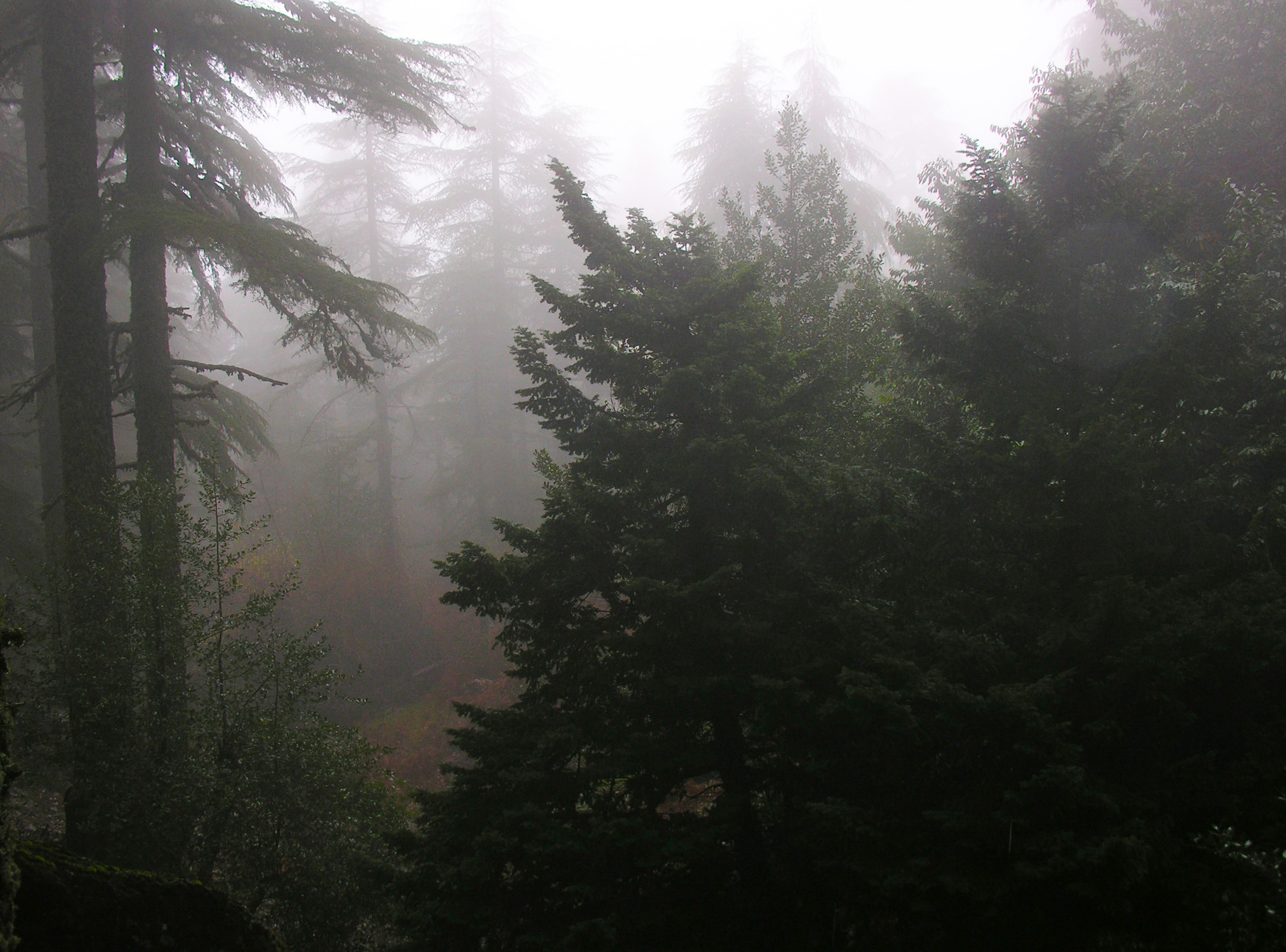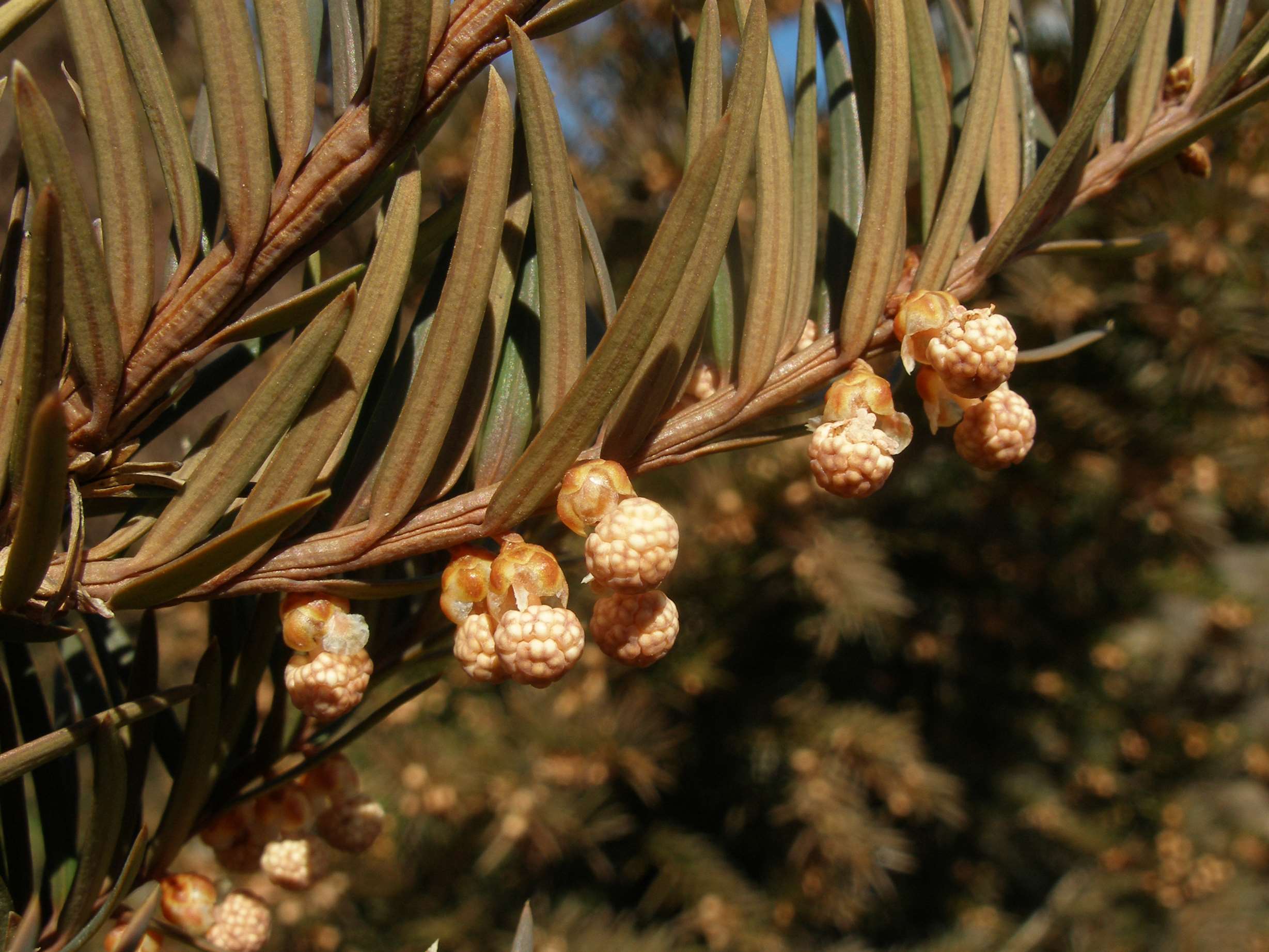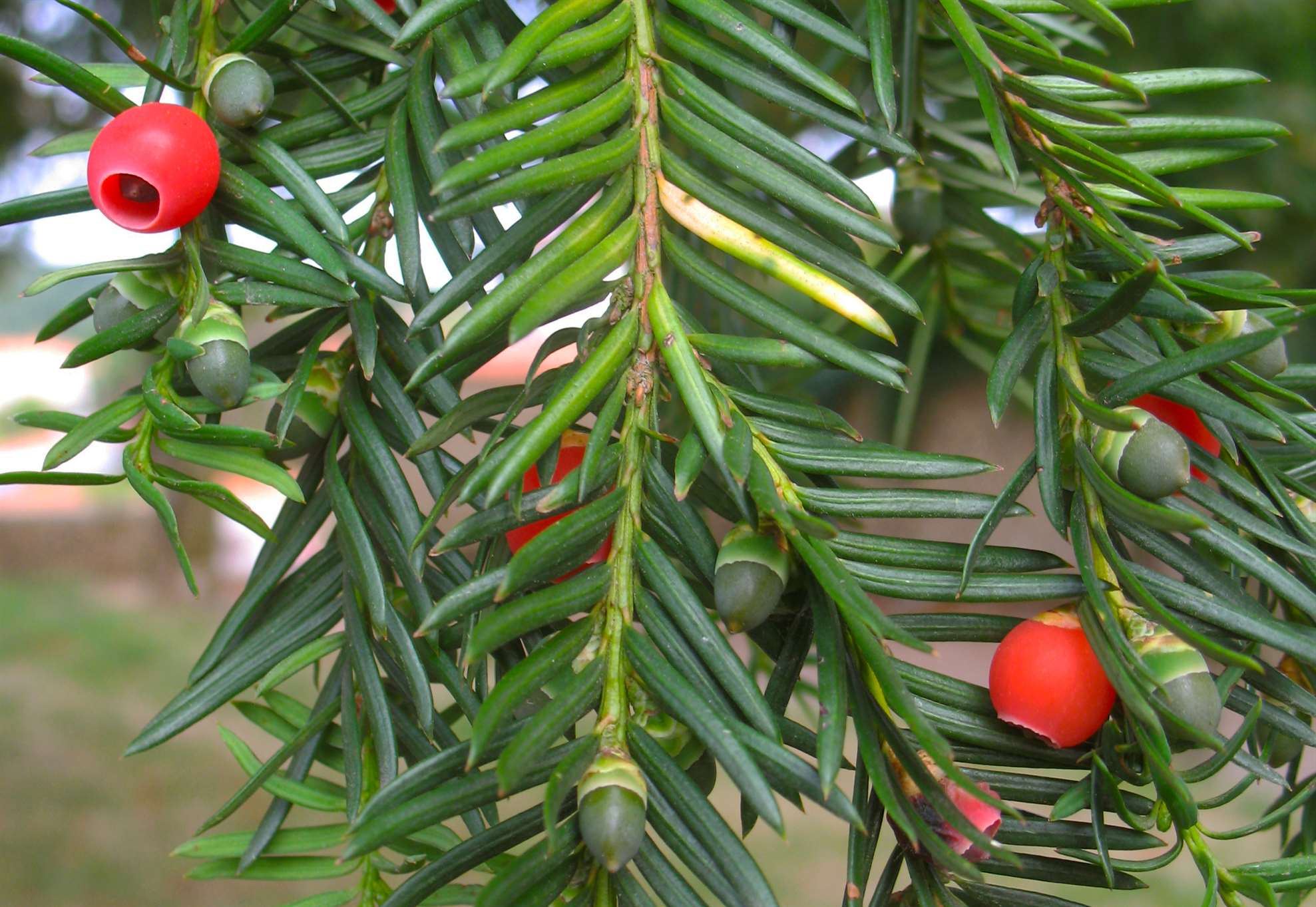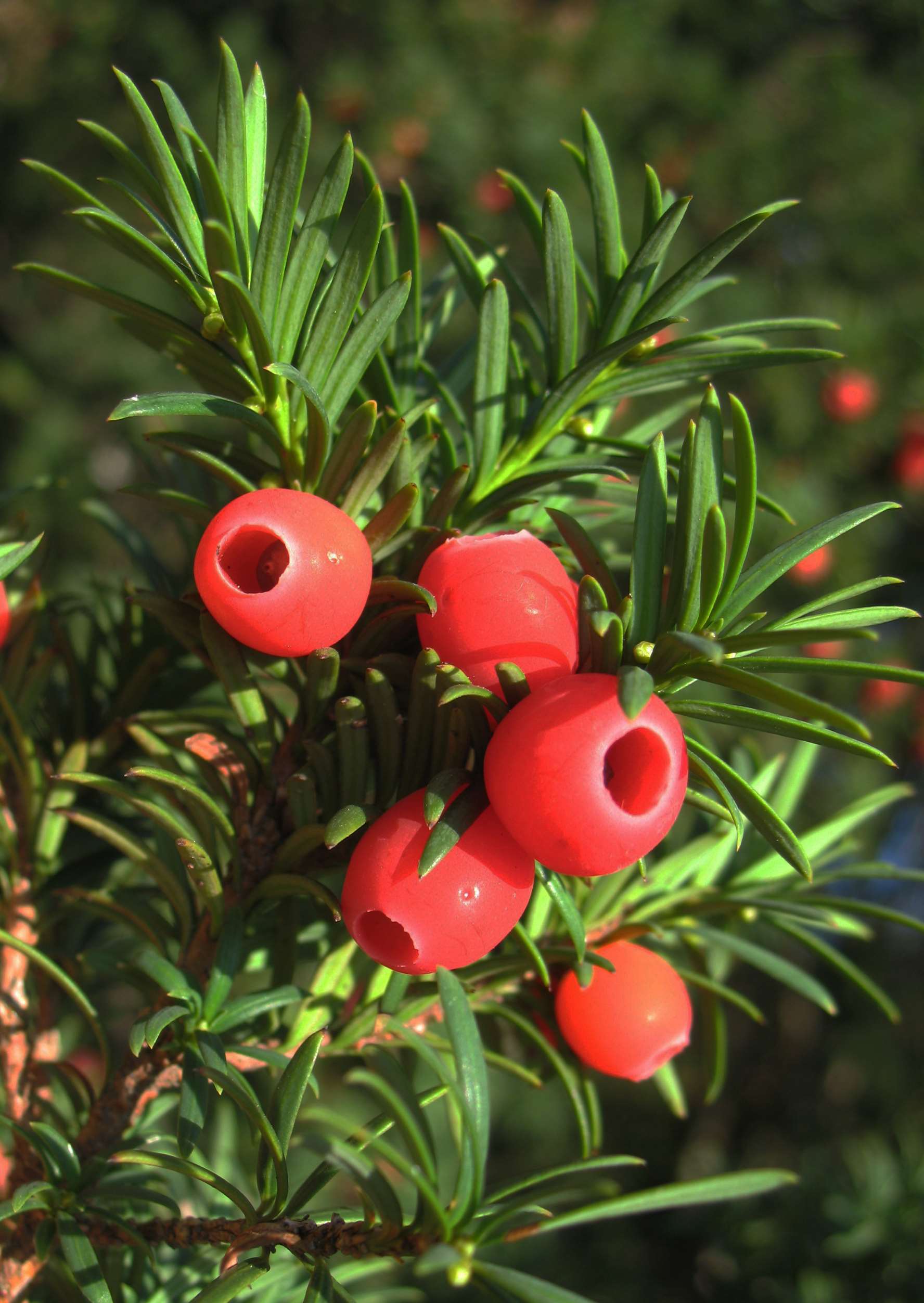Taxus baccata L.
Eng.: Yew. Spa.: Tejo. Fre.: If. Ara : Igen, igni, tareq, terfass, tirfazen. Tam.: Dakhs, t’akhch, siguel, sigeh, imeruel.
Evergreen tree, dioecious, which can reach 15 m in height, crown rounded or ovate-conical and very dark in overall appearance. Trunk ± straight, up to 1 m in diameter, bark greyish-brown ± dark, striated, that detaches in strips or narrow plates. Branching irregular. Branches extended, horizontal, ± upright and sometimes sloping. Branchlets with red-brown bark. Leaves grow on the branchlets twisting their short petioles so that they are arranged in two dense facing rows; linear, flattened, subacute (10-30 × 1.5-2.5 mm), dark green on the upper side of the leaf and a little lighter on the underside. Male cones globose (4-6 mm), yellowish, born solitary in the leaf axil. Surrounded at the base by an envelope formed by a series of orange bracts. Female cones or seminal primordia solitary, axillary, ovoid, blackish, surrounded at the bottom by a greenish cup-shaped bract, which gives these cones the aspect of little acorns. This bract then grows, becoming fleshy and red, enveloping the seed except for the top.
Flowering:
February to April.
Fruiting:
August to October of the same year.
Habitat:
In very diverse terrains in calcareous and siliceous mountains, from 500 to 2,500 m. In subhumid to hyperhumid bioclimate, from mesomediterranean to inferior oromediterranean floors. It rarely forms pure forests, but it appears dispersed between Pinaceae and Fagaceae forests.
Distribution:
Europe, northern half of Asia and North Africa. In Morocco it is found with some frequency in the central and western Rif, Jebel Tazekka, the central and eastern Middle Atlas, and the central and eastern High Atlas. In Algeria it always appears in the NE, in the mountains of Babors, Akfadu, Aures, Djurdjura and Blida, rarer towards the W (only cited in Ras Asfour, region of Oran). Although it can be seen between oak (Quercus faginea and Q. ilex) and riverside forests, usually it grows in fir and cedrus forests.
Observations:
The whole tree is very poisonous due to the presence of toxic compounds in the wood, branchlets, leaves and seeds: the taxanes (particularly, taxol, currently used as an antitumour agent). Consumption by humans or livestock can cause death. Interestingly the red aril that almost surrounds the seed also has these compounds; with a sweet taste, it is edible, enabling ingestion by birds, which digest it, but expel the hard inner seed whole, thus favoring the spread of the tree.
Conservation status:
In the IUCN Red List of Threatened Species it is listed at a global level as Least Concern (LC) (Farjon, 2013). However, in North Africa, where the species is very rare and localised, if evaluated at a national and/or regional level it would be possibly included in a category of threat. In Morocco it is included in its List of native species that need authorization for commercial use (Law 29-2005 and Decree 2-12-484 of 21-May-2015). In Algeria it is included in the List of protected non cultivated flora (Executive Decree 12-03 on 4-Jan-2012).






